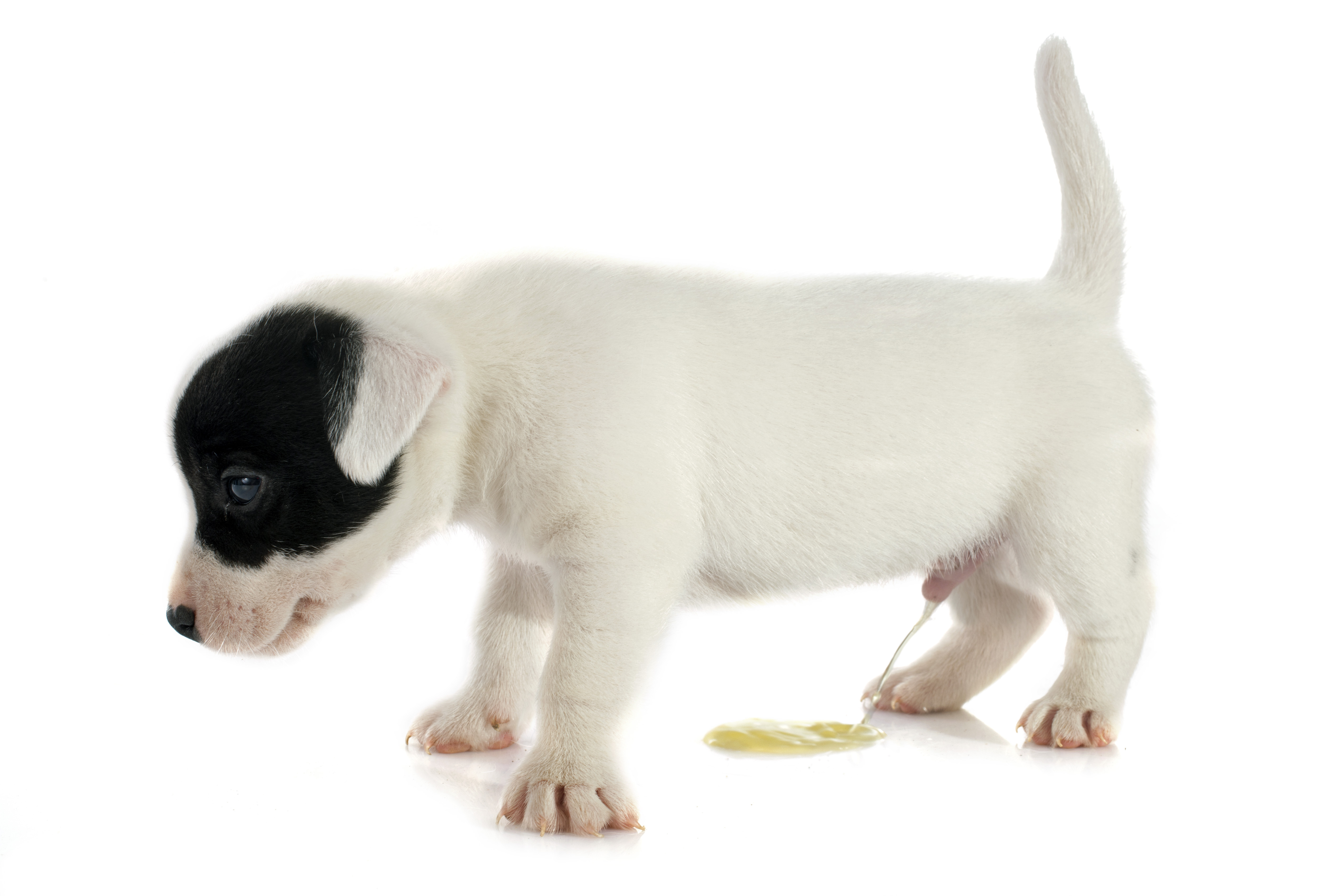
15 Tips To Improve Your Dog's Diet Today!
I would like to share with you some of the most important principles that I apply in pursuit of the perfect canine diet. My aim is to inspire you to produce your own dog’s meals. If you are happy with the current food you are feeding then incorporating even some of these suggestions will benefit your dog. Remember, it doesn’t have to be an ‘all or nothing’ mentality - do what you can, as often as you can.
1. Discard the marketing hype and take the label test
No matter how entertaining, relying on advertisements for nutritional information is not ideal. Carefully examining the labels on your dog’s food and treats will assist you in making more informed purchases.
Ingredients are always listed from the most abundant to the least within a product.
Google-search each of the first five ingredients. Firstly, type in each ingredient followed by ‘bad for dogs’ and then, ‘good for dogs’. The results may surprise you.
When you start researching it will soon become apparent why I am against prescription foods sold by vets - they may suit a given condition but can cause many other problems.

Discuss the ingredients with the person or company recommending the products. If they cannot explain what each ingredient is, its provenance and how it is good for dogs, then rely on your own research and judgment.
2. Avoid feeding shelf-stable foods as a staple diet
Thanks to clever marketing, the average consumer often overlooks the alarming reasons behind why processed food has a 12-24 month shelf-life.
Marketing has conditioned us to believe that shelf- stable foods provide everything that dogs need to live long and healthy lives, when actually the opposite is true. While there will always be the rare exception to the rule, do not count on your dog being one of them.
Nutritionally speaking, shelf-stable products have no live enzymes due to their industrial cooking processes - they are dead foods that rely on synthetic supplementation to meet the supposed ‘balanced’ standards of nutritional content.
My gripe with these products is not that they exist, but the way they are marketed - as a staple, daily diet.
Biscuits, kibble and canned foods have their place – in shelters, charities, on long trips, or for occasions when we are pressed for time - but they should not be fed as a staple diet.

3. Introduce fresh wholefoods
Fresh wholefoods such as vegetables and fruit are full of live enzymes and will add a new dimension to your dog’s health. Wholefoods are also full of fibre, which aids digestion and improves stools.
Due to the cooking processes that shelf-stable foods undergo in order to produce a long shelf life, many of the inherent nutrients are destroyed; for this reason synthetic nutrients are added back into the products. These nutrients are synthetic imitations of those found in nature, and therein lies the vast difference between wholefoods and industrially-produced foods: Unlike most synthetic nutrients, wholefoods contain the nutritional co-factors that work synergistically to assist the body to absorb, assimilate and make use of nutrients.
You are not simply what you eat, but more importantly, you are what you can absorb. Do your own research on safe wholefoods for dogs. There are certain fruits and vegetables that dogs must avoid; also, you will be amazed at which parts of the vegetables are the most nutritious: For example, broccoli stems contain more nutrients than the head.
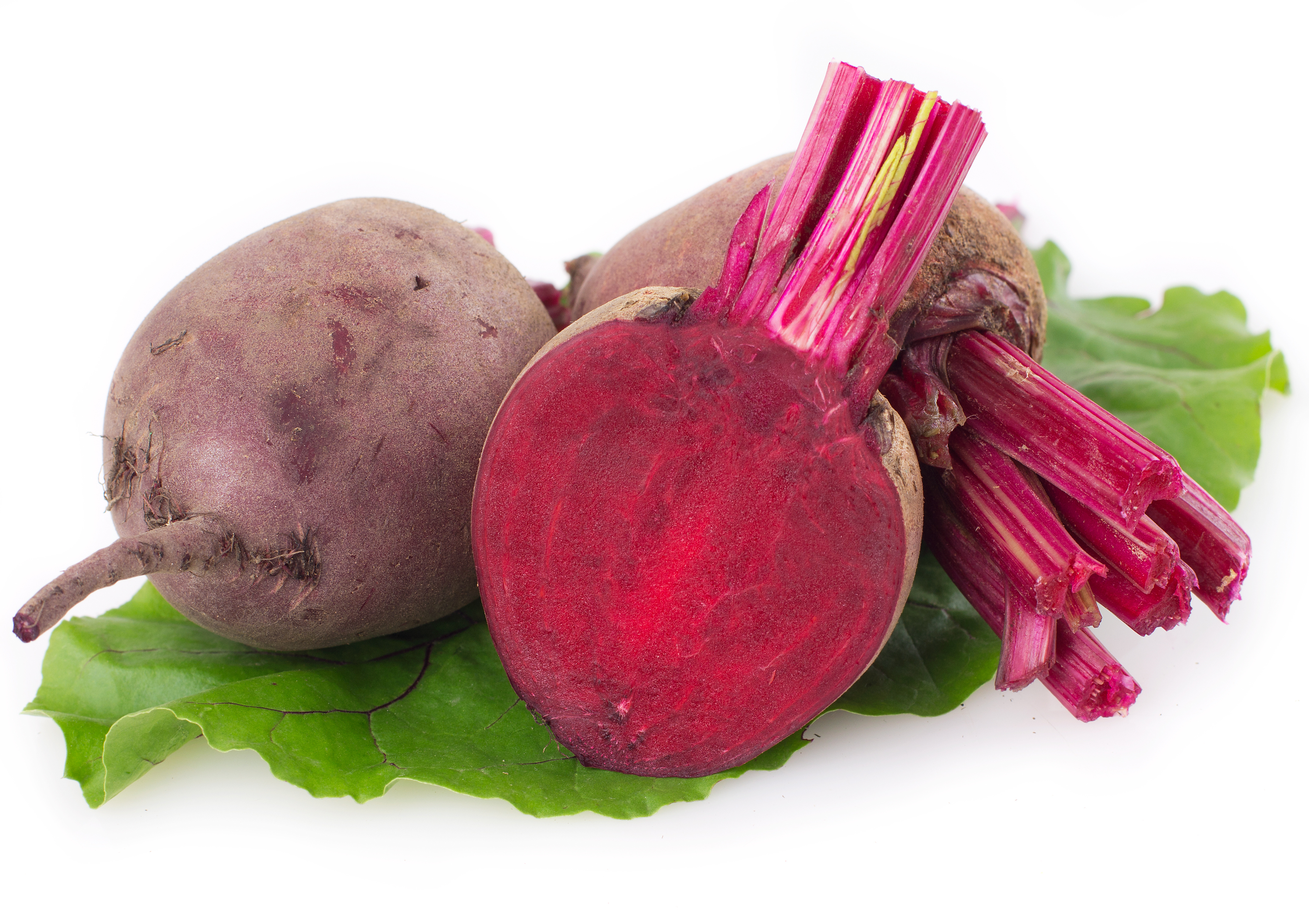
Puree vegetables for maximum nutrient absorption or feed whole as a bone substitute for teeth and gum maintenance.
4. Feed a variety of ingredients rich in antioxidants and anti-inflammatory properties
Inflammation is a major cause of disease so it is important to research all ingredients making up your dog’s diet, along with the processing they undergo. Inflammation is the banner under which fall the leading causes of premature aging, not only in people, but in dogs, too.
As you are probably now aware processed commercial foods are inherently inflammatory. Pancreatitis and arthritis are common when processed food is fed too often. If you must use commercial food it is best to at least offset its ill effects by adding naturally anti-inflammatory wholefoods into the mix. Wholefoods high in antioxidants also help reduce inflammation in the body.

Keep your dog young and healthy by feeding a variety of wholefoods that are high in antioxidants and anti- inflammatories.
5. Avoid cooking meats
All species on the planet eat raw food, except for humans; when we cook our food to please our palates, we actually destroy most of the beneficial nutrients in the process. It is the same when we cook food for our dogs. While certain wholefoods may release more nutrients once cooked, generally speaking cooking meat should be avoided whenever possible.
Irrespective of purported nutritional values, here is one of many reasons why commercial pet foods are fundamentally flawed: “When the muscles of mammals, fish, or birds are cooked at high temperatures carcinogenic chemicals called heterocyclic amines are created that may increase the risk of breast, colon, lung, pancreatic, and prostate cancer. Risky cooking methods don’t just include barbequing, frying, and grilling. Even just baking chicken at around 350 deg F for 15 minutes leads to significant production of these cancer-causing compounds.”
-Michael Greger M.D.
6. Use certified organic vegetables and fruit when possible
Many of the non-organic fruit and vegetables on the market have been genetically modified, and with no labeling laws in place it is impossible to know exactly what we are eating. Although approved for human consumption, evidence suggests that genetically modified foods are not safe. I encourage anyone who is concerned for the wellbeing of their family and pets to investigate the GMO issue for him or herself.
“The process of genetic engineering can disrupt the functioning of the DNA in dramatic ways - it can turn genes off, permanently turn them on, change their levels of expression, and create all sorts of unpredicted allergies, toxins, carcinogens, nutrient problems etc.”
- Jeffrey Smith, Author: Seeds of Deception.
Dogs typically have one tenth of the lifespan of humans and as such, the health problems we see emerging in dogs that are exposed to GM foods today will no doubt be seen in people in many years to come.
Findings show that 5th and 6th generation offspring of lab mice are affected by the genetically modified food consumed by their ancestors.
7. Wash non-organic produce in apple cider vinegar or use an ozone machine
Plants produce allelochemicals to help prevent toxic substances including pesticides from penetrating their surface. You can scrub the pesticides off non-organic fruit and vegetables with a clean soft brush while soaking them in one part apple cider vinegar and four parts water for a minute, then rinsing.
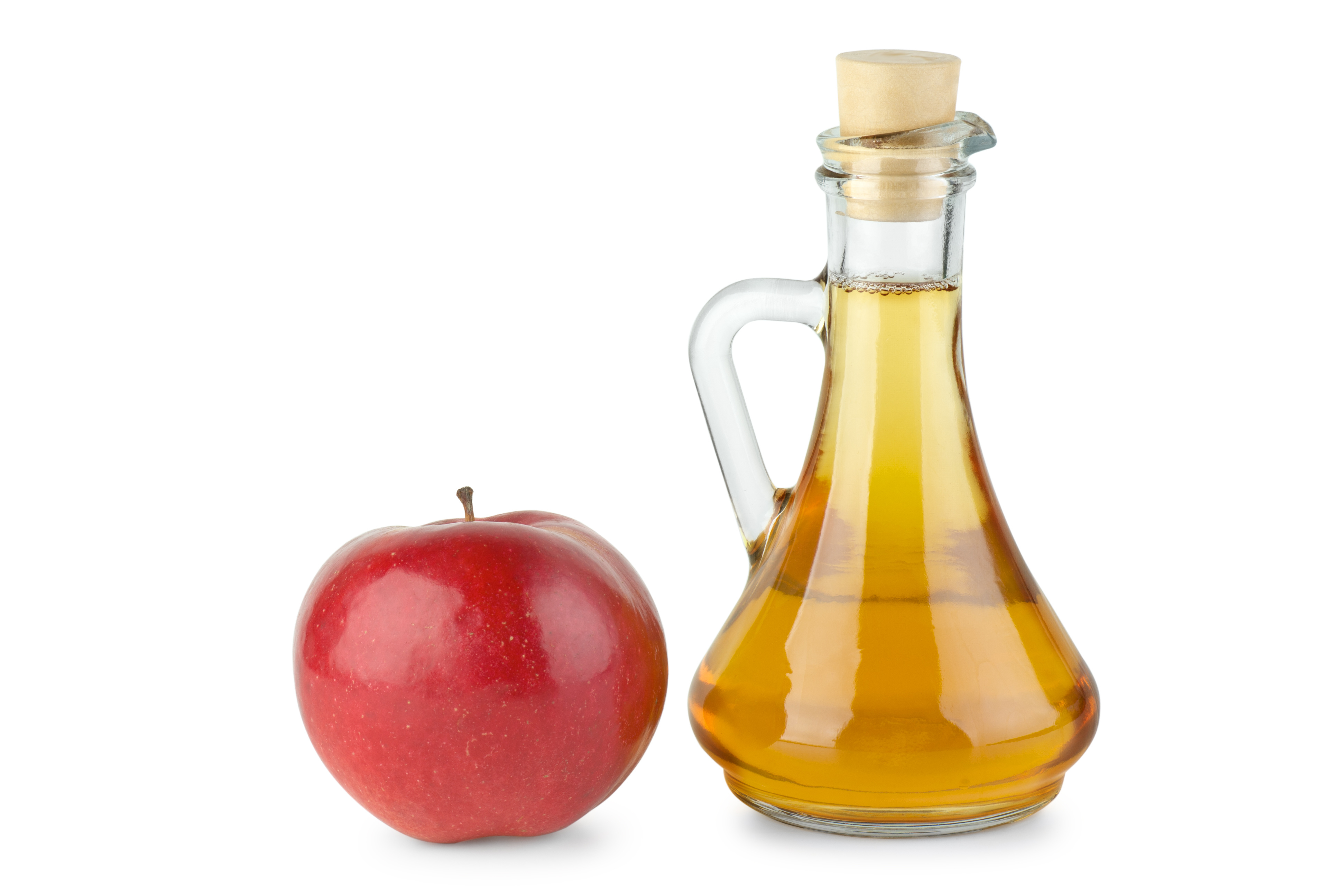
Alternatively, you can use a quality Ozone machine to help eliminate pesticides and bad bacteria. Cashido make a great machine.
8. Avoid gluten
Ever wondered why dogs have smelly farts and stools? Many dry pet foods contain gluten meal. This dried residue which is made from corn is added to pet food to slow down the process whereby inferior, unstable fats become rancid; this has the effect of retaining waste products and putting a strain on liver and kidneys.
Corn gluten even in small quantities may have a negative impact on a dog’s organs; moreover, often it is GMO corn that is used in pet food.

Corn is one of the most common causes of food allergies in dogs.
9. Replace rice with organic green lentils
Dogs don’t need grains at all to be healthy, do not eat them in the wild, and most are allergic to wheat.
A great protein-rich substitute is green lentils: Just like rice, green lentils require boiling, so your preparation time is similar (soak first and rinse before cooking, then rinse again after cooking).
Lentils are one of the most nutritionally valuable leguminous plants. They have the highest protein content. They are also rich in fibre and minerals, particularly iron and magnesium.
They are rich in lysine, which is an essential amino acid that can help boost the immune system. It is also used for preventing and treating cold sores, herpes and shingles in humans. Lysine aids in preventing the herpes virus from growing and is also consumed by athletes to improve athletic performance.
If for any reason you wish to continue feeding rice, use brown rice instead of white. Similarly, instead of white potatoes use the more nutritious sweet potatoes.
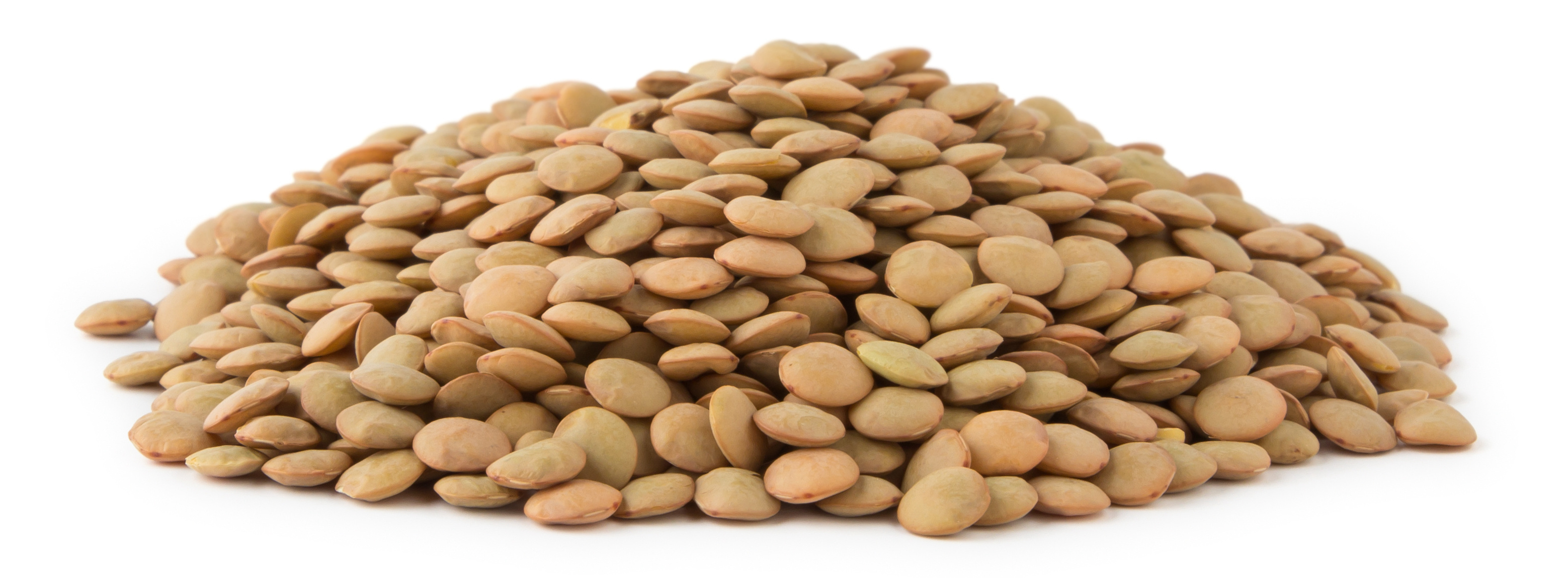
10. Make raw coconut oil the main source of fat
Unlike animal fats and other vegetable fats, raw coconut oil (virgin cold-pressed) is truly unique. Whilst high in saturated fat, it is a healthy saturated fat that is predominantly made up of medium-chain fatty acids that the body does not store.
Raw coconut oil goes straight to the liver where it gets converted into energy. The more energy your dog has, the more it exercises; the more it exercises, the leaner it stays; the leaner it stays, the less chance of obesity- related diseases.
Did you know: The majority of the fat content in Augustine’s SuperFood comes from raw coconut oil.
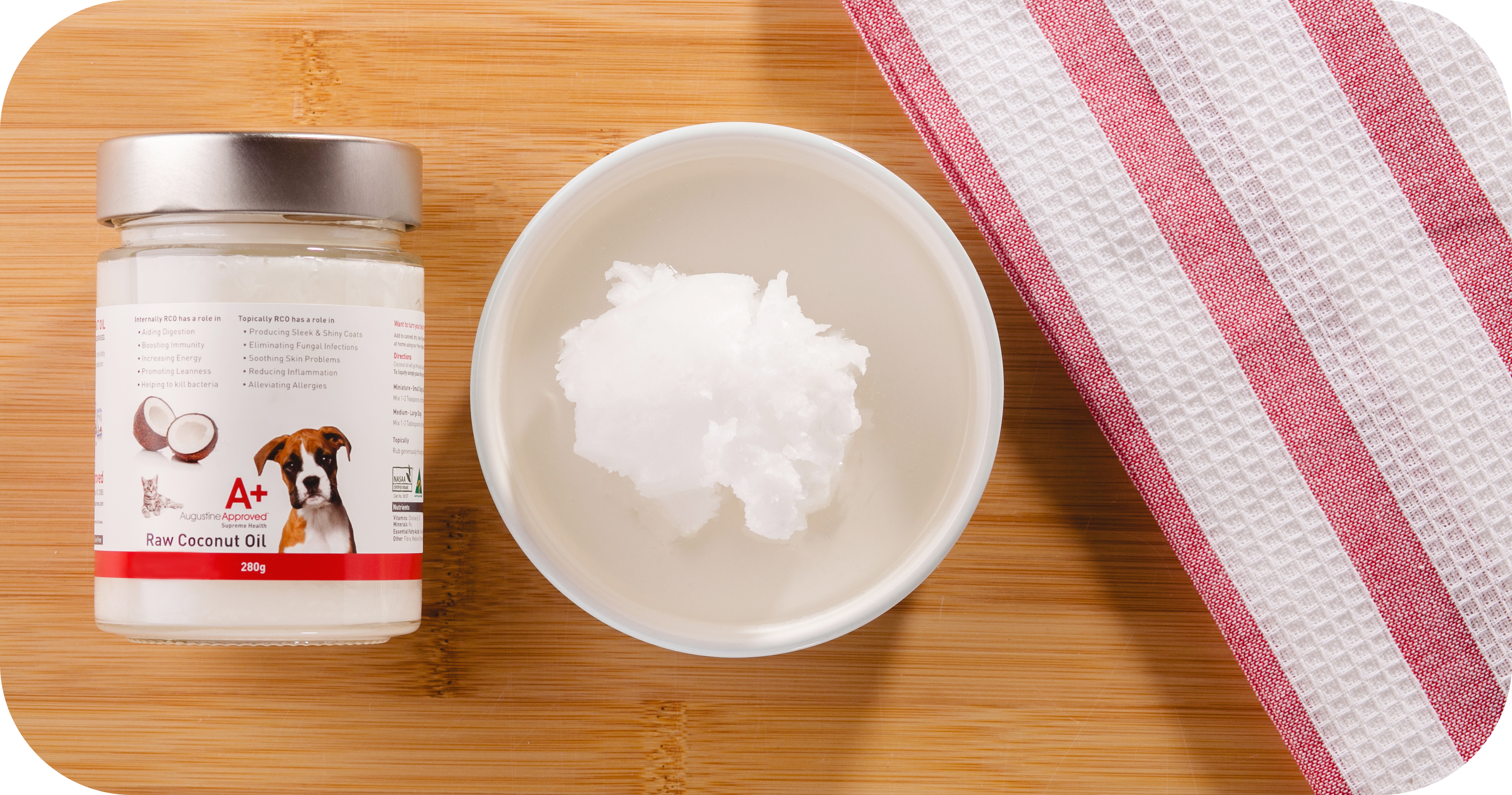
11. Do not over feed
Feed your dog according to whether they need to gain or lose weight. For example, if your dog is overweight then feed towards the earlier part of the day when there is more opportunity to work it off. If your dog needs to gain weight then feed more regularly and especially before bedtime, preventing the dog from burning off those calories.
Within reason, don’t worry about your dog being too skinny. It’s ok for a dog to be very slim, especially in their younger, more active years. As dogs grow older it becomes easier for them to gain weight so don’t set them up for failure by trying to make them heavier too early - it will come naturally over time.
Lean dogs are healthier dogs.
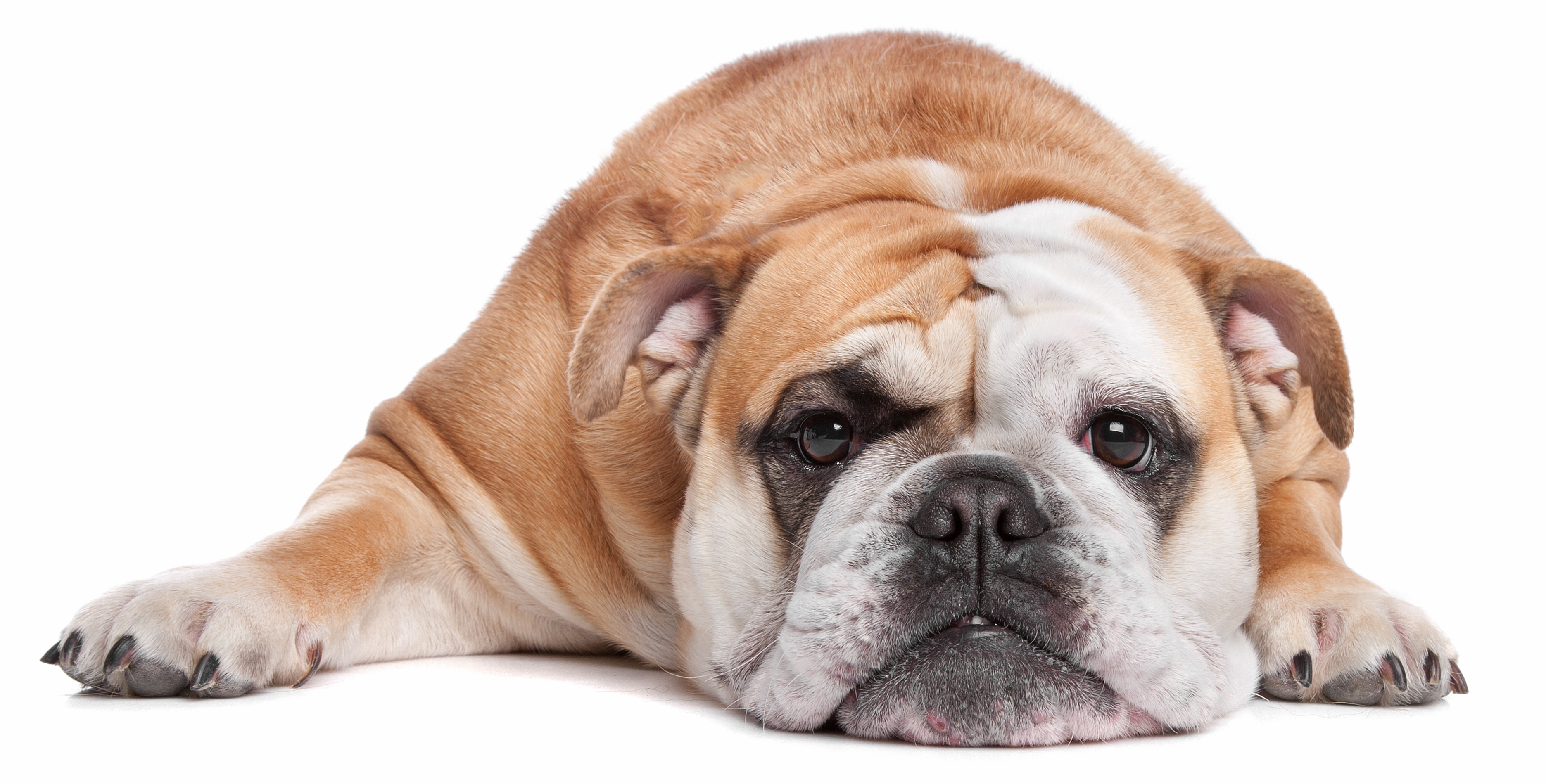
12. Get innovative for teeth and gum
health
Some commercial treats claim to be beneficial to teeth and gum health but their unhealthy ingredients and cooking processes can cause other health problems.
If you ask any dentist how to best keep teeth plaque- free and gums healthy they will recommend brushing. Second to that, and apart from salt rinses (which are abrasive) is to chew on wholefoods like carrots and zucchini. You see, it’s all about the rubbing and sloughing action on the teeth. The same rules apply for dogs.
It isn’t always possible or practical to brush your dog’s teeth - a good alternative is to make fresh treats that dogs can gnaw on to help remove plaque. Try cutting some holes in vegetables and cover them with raw coconut oil when it is in liquid form. Place in the freezer for five minutes then serve.
These treats can also satisfy a dog’s need to grind and chew, and they aren’t as harsh on teeth as bones. Be warned - there will be bits of vegetables everywhere but that’s ok, we aren’t feeding these for digestion.
In the unlikely event that a dog rejects these natural treats, don’t give up – play a game of roughing them up with the treats, throwing them to encourage a fetching game, or even play hide and seek.
Raw coconut oil also acts as a wonderful canine tooth- paste because it has antiviral, antibacterial, and antifungal properties - plus most dogs love the taste!
Allowing your dog to lick hardened coconut oil off a bowl for 20 seconds after each meal is a great way to help with bad breathe.
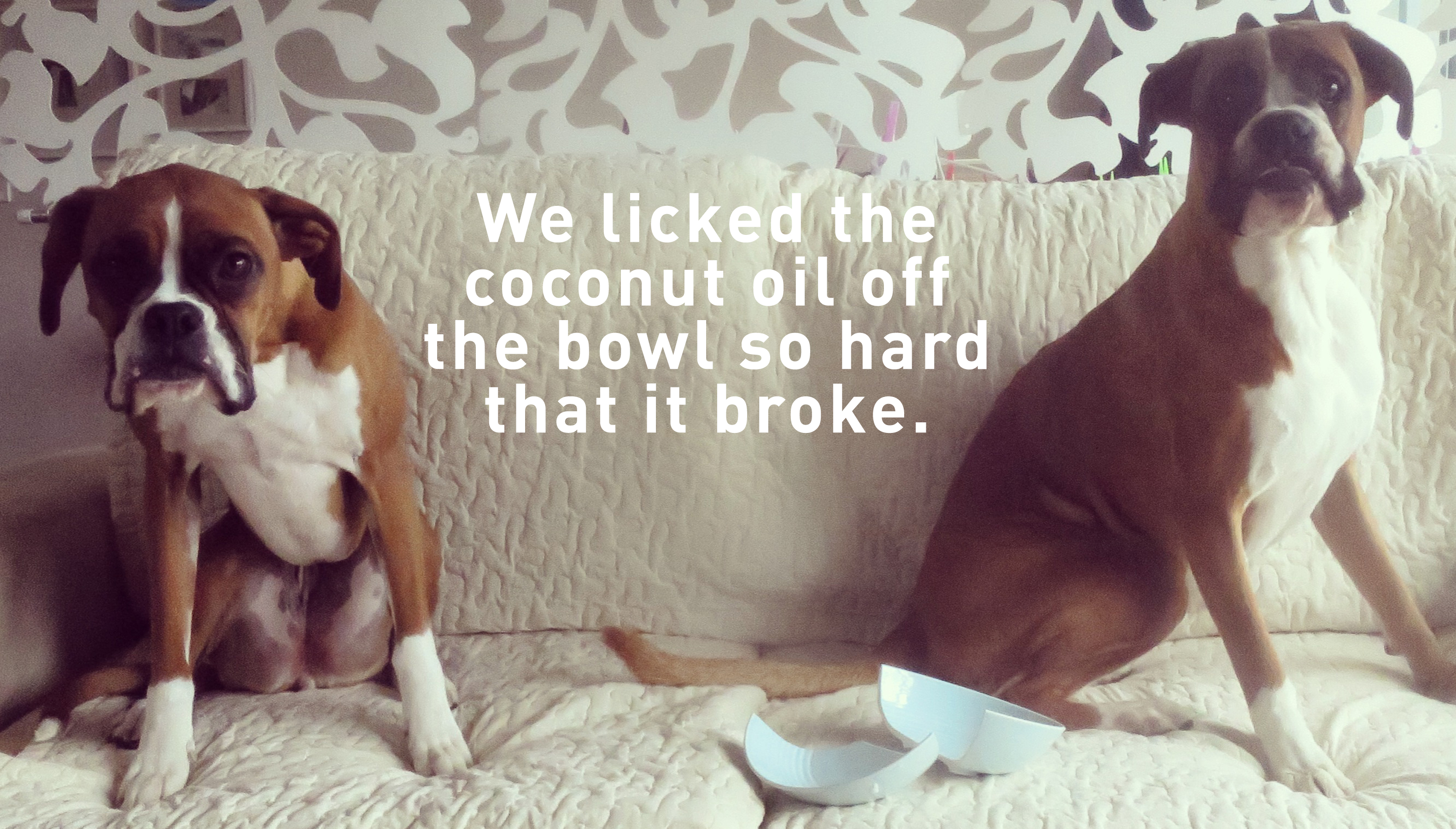
13. Rethink your water
Water is the most important aspect of a healthy diet yet it is the most overlooked. There are well over 100 chemicals in tap water depending on where you live.
The best water I have come across is Saka Water and it is the only water my dogs drink. If you can find a retailer in your country then do not hesitate in acquiring some.
Of course all homes should have a water filter, to filter out unwanted chemicals such as fluorosilicic acid (hydrofluorosilicic acid).
A very cost effective alternative to water filters is Dr. Willard’s - one of the most unusual products you will ever find. In essence it is just water, but add a few drops of it into your dog’s water bowl and special things start to happen... it purifies water, makes it alkaline, and also aids in the assimilation of nutrients, among many other benefits.
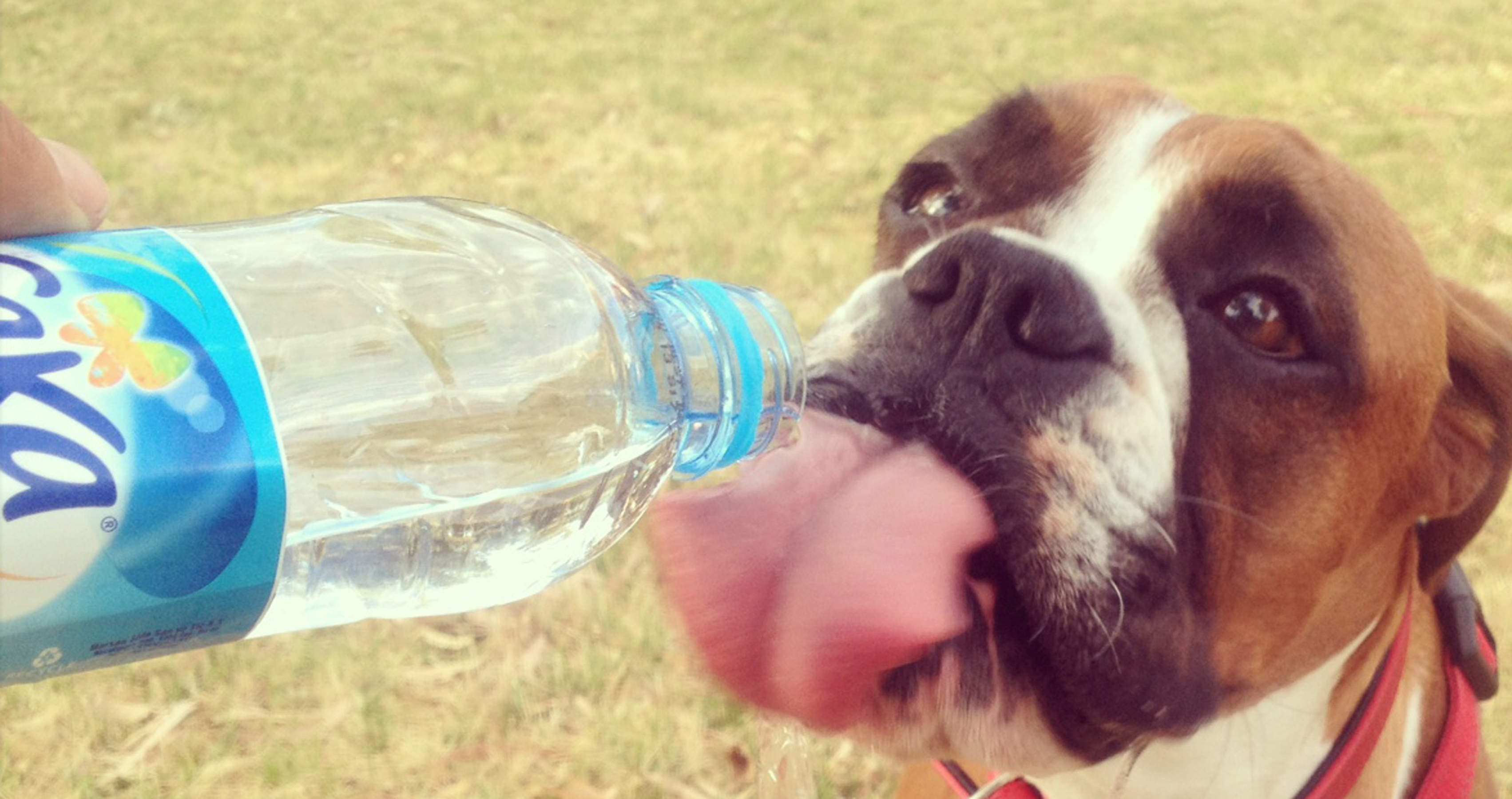
14. Wash bowls with vinegar
A good vinegar is a chemical-free alternative to commercial cleaning products. Among other things, it can be used to wash your dishes, including the dog bowls and floors. It disinfects and dries odourless.
Dogs can be sensitive to commercial cleaning products so replace as many of these as possible with natural alternatives. Apart from vinegar, the only cleaning products in our home are from reSPARKLE.
15. Take Charge
You know your dog better than anyone so it makes sense that you should be in control of your dog’s diet.
I couldn’t even cook for myself when I started making food for Augustine but it didn’t take long to get the hang of it - now look how healthy she is!
You can use our recipes and read about our products as a starting point and develop a menu from there. Don’t be afraid to get in touch anytime with questions.

Bonus Tip 1: Skin Care
Do not put anything on your dog’s skin that you would not eat.
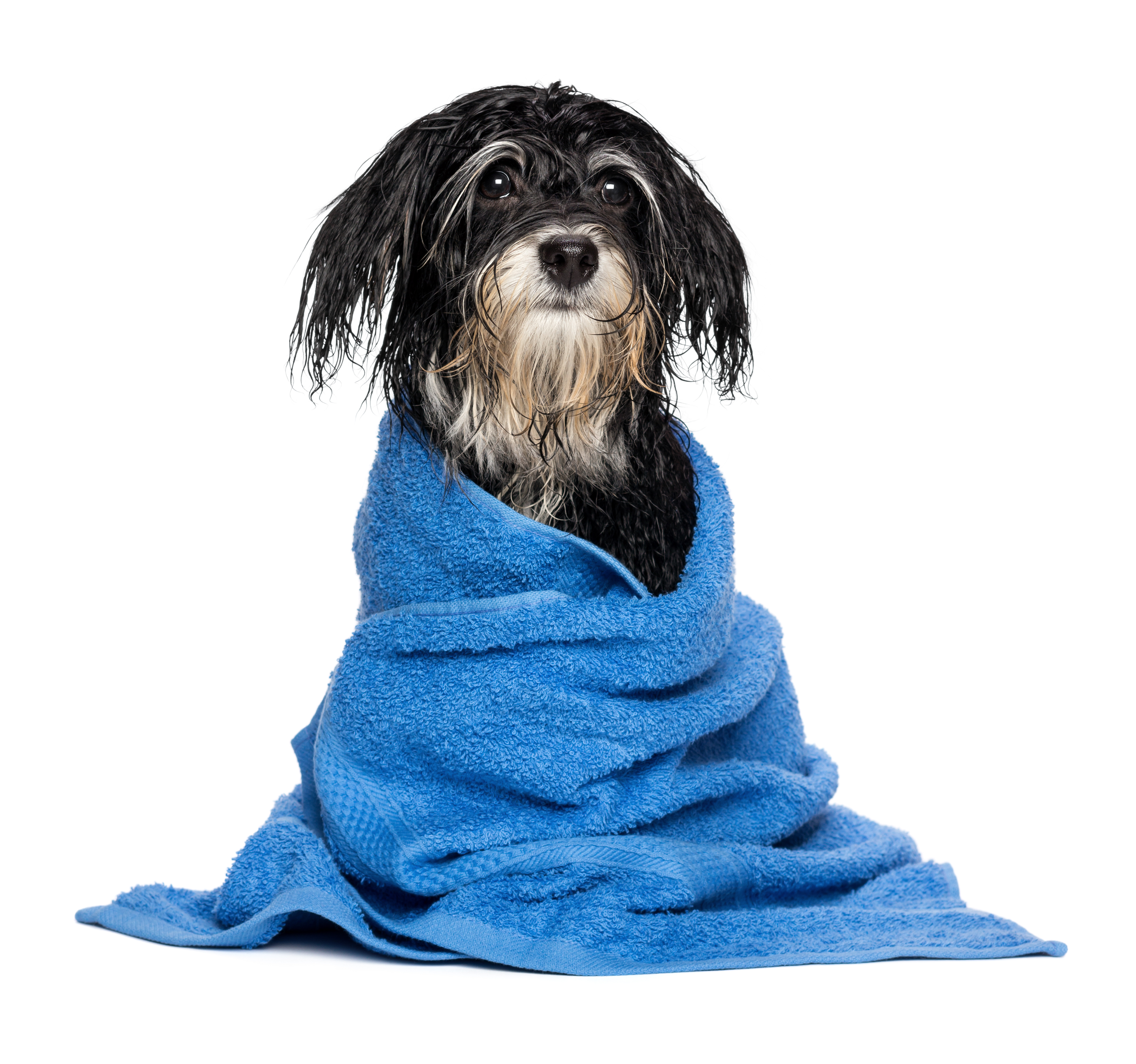
Bonus Tip 2: Exercise
Diet and exercise go hand in hand.
Gently walking your dog 20-30 minutes after feeding helps to improve bowel movements and regularity.

Bonus Tip 3: Toilet Times
It is imperative that dogs have the freedom to go wees and poos at will. Similarly to us when we have to hold on for extended periods of time, it is not healthy for for dogs to hold in what the body has worked hard to expel.
Please be mindful of the need for frequent toilet breaks if living in areas where outdoor access is restricted.
